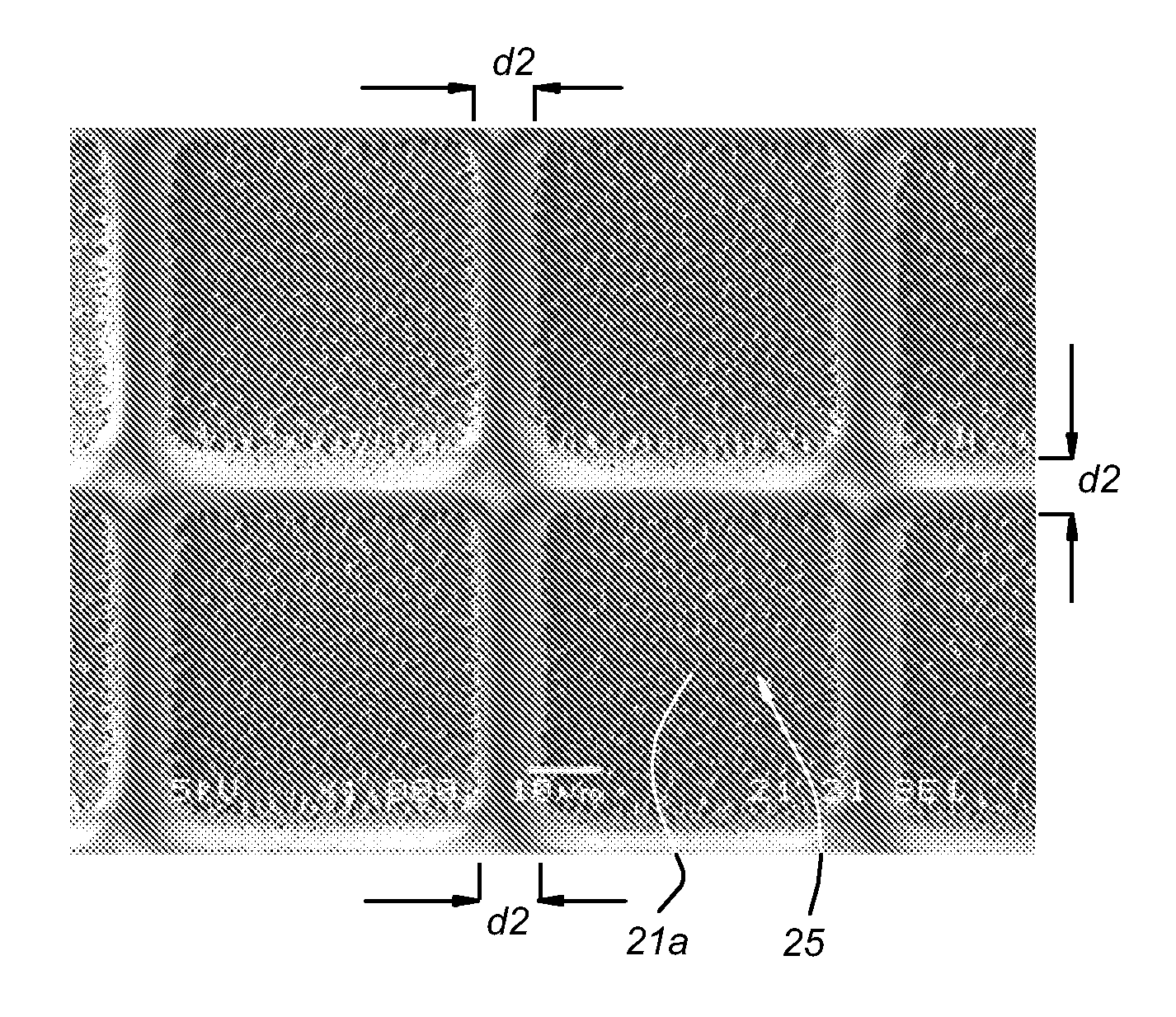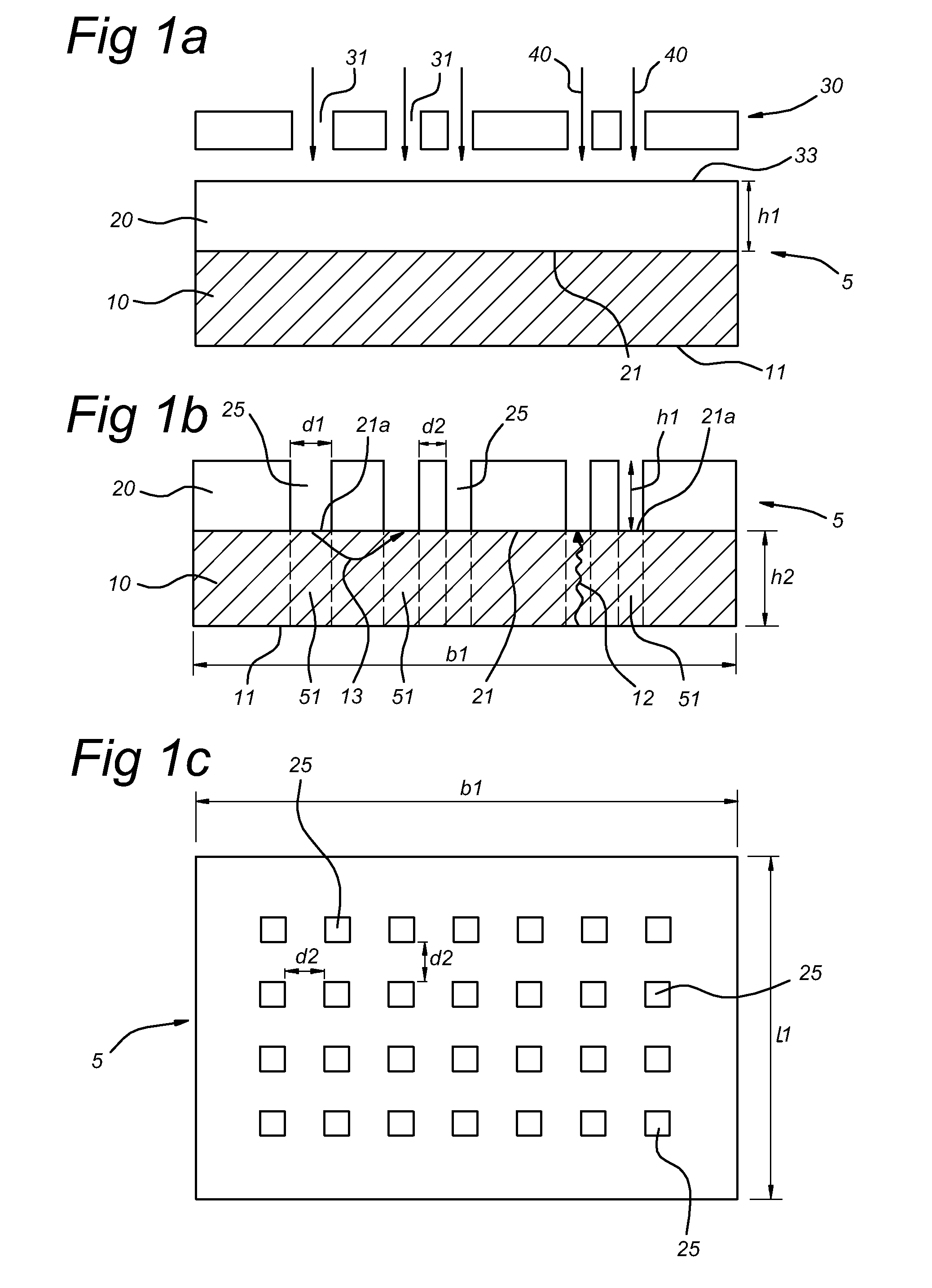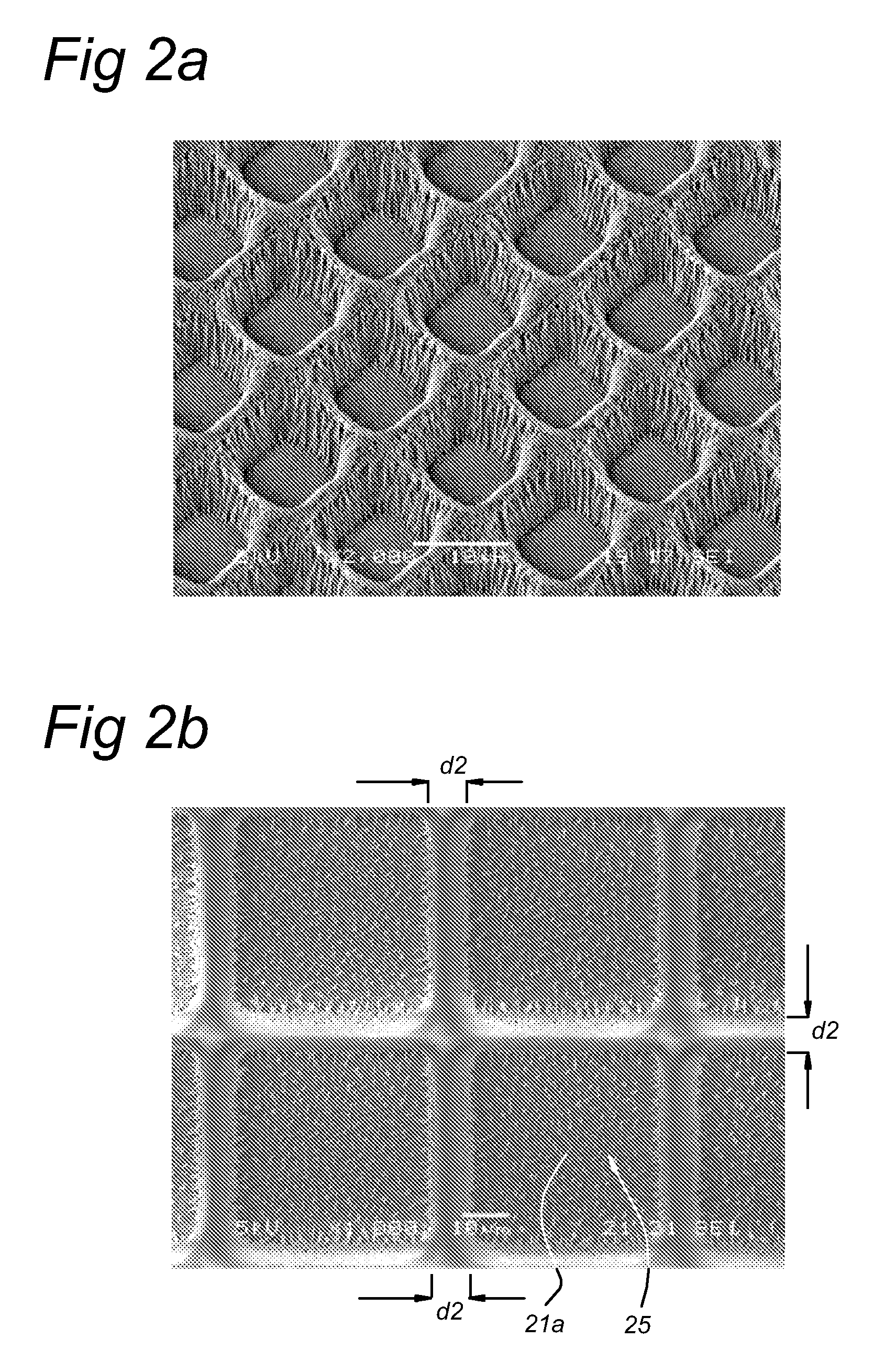Biochip and process for the production of a biochip
a biochip and process technology, applied in the field of microbiology, can solve the problems of no high throughput (here abbreviated as ht) methods for analyzing direct or indirect cell-to-cell interactions, arrays unsuitable for high throughput microbiological applications, and inability to replicate autonomously
- Summary
- Abstract
- Description
- Claims
- Application Information
AI Technical Summary
Benefits of technology
Problems solved by technology
Method used
Image
Examples
example 1
Heterogeneity in Cell Size and Nucleic Acid Distribution Material and Methods
[0109]Escherichia coli (strain 2613) was inoculated on sterile Anopore (0.2 micron pore size, 60 microns thick, 8 mm×36 mm strips) at a density of 2000 cells per mm2 of area.
[0110]The strip was incubated at 37° C. for 2 hours by placing it on 2TY agar to allow formation of micro-colonies on the upper surface of the Anopore by division of cells from the inoculum.
[0111]The Anopore was then moved to a microscope slide covered in a thin film of solidified low-melting-point agar containing the nucleic acid-binding dye Syto9 (Invitrogen).
[0112]This method allowed rapid staining of the cells on the Anopore with minimal disturbance of the cells on the surface by the dye passing upwards though the pores and entering the cells. After 10 minutes, the micro-colonies are imaged by means of a BX41 fluorescent microscope equipped with Fluorotar lenses (Olympus, x50 objective used). Data was captured using a Kappa CCD came...
example 2
Heterogeneity in Cell Length and Cell Growth Material and Methods
[0114]Strain WCFS 1 of Lactobacillus plantarum was inoculated on anopore (as in Example 1).
[0115]The anopore was incubated at 37° C. for 5 hours on MRS agar under anaerobic conditions to allow formation of micro-colonies.
[0116]Electron microscopy (Cryo-SEM) was used to image the resulting micro-colonies directly on the anopore surface.
[0117]The length of the cells in each of three distinctly separated micro-colonies was calculated using the cell-analysis program ImageJ (NIH). As a control, repeated measurements of a randomly chosen cell were made to assess the variability of the measuring technique.
[0118]Both intra-colony heterogeneity and inter-colony heterogeneity in cell length was observed.
example 3
Interaction between Micro-Colonies
[0119]The two colonies are Enterobacter cloacae grown on Anopore® for 4 hours on Mueller-Hinton agar at 37° C. then stained from below using a mixture of Syto9 dye and Hexidium Iodide. The inoculum was stressed by its environment prior to inoculation on Anopore®, normally Hexidium Iodide penetrates this species poorly but here heterogeneity has been observed with the 2-dye system. In this case no bias indicating any interaction was observed.
PUM
| Property | Measurement | Unit |
|---|---|---|
| thickness | aaaaa | aaaaa |
| height | aaaaa | aaaaa |
| porosity | aaaaa | aaaaa |
Abstract
Description
Claims
Application Information
 Login to View More
Login to View More - R&D
- Intellectual Property
- Life Sciences
- Materials
- Tech Scout
- Unparalleled Data Quality
- Higher Quality Content
- 60% Fewer Hallucinations
Browse by: Latest US Patents, China's latest patents, Technical Efficacy Thesaurus, Application Domain, Technology Topic, Popular Technical Reports.
© 2025 PatSnap. All rights reserved.Legal|Privacy policy|Modern Slavery Act Transparency Statement|Sitemap|About US| Contact US: help@patsnap.com



